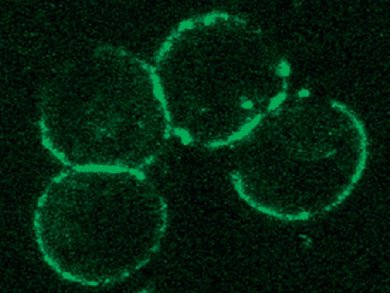Macromolecules can pass through defects found in vessels supplying tumor tissue to concentrate in diseased tissue only. Polymers provided with fluorescent labels can thus be used for early detection of cancer.
Peter Kunz et al., Heinrich-Heine-Universität, Germany, have synthesized biodegradable polylactides with a monodentate end group that can coordinate to a rhenium tricarbonyl core. This monodentate ligand allows further functionalization at the metal centre, in this instance with bisimines, to create a fluorophore that can be detected in the cell membrane. Hydrolysis of the polylactide then allows detection in the abnormal cells by using fluorescence microscopy.
The polymer was selected because it forms the nontoxic and easily metabolized monomer, lactic acid, on degradation. Furthermore, selection of the radioactive isotope rhenium-186/188 for the complex opens the possibility for a range of therapeutic uses.
- Fluorescent Polylactides with Rhenium(bisimine) Cores for Tumour Diagnostics
N. E. Brückmann, S. Kögel, A. Hamacher, M. U. Kassack, P. C. Kunz,
Eur. J. Inorg. Chem. 2010.
DOI: 10.1002/ejic.201000721




